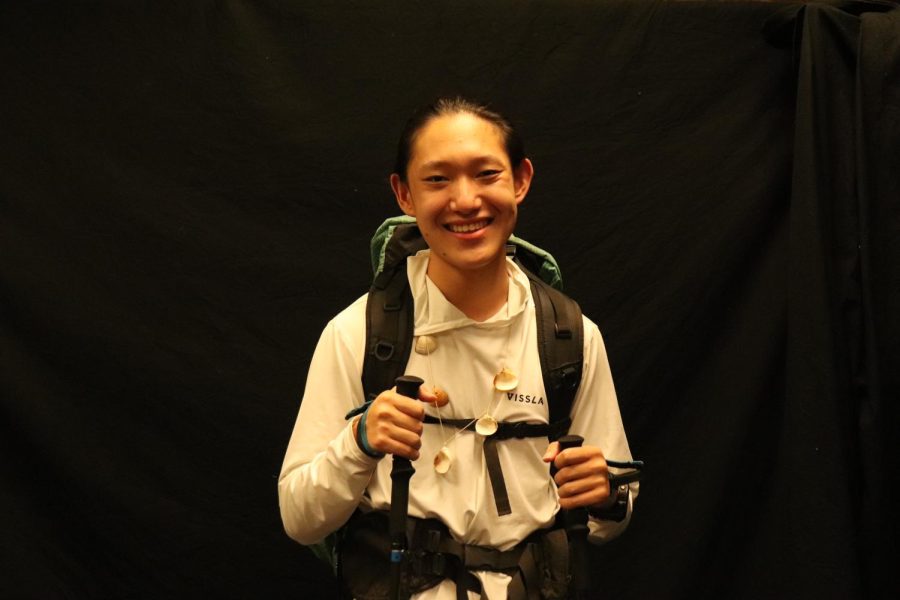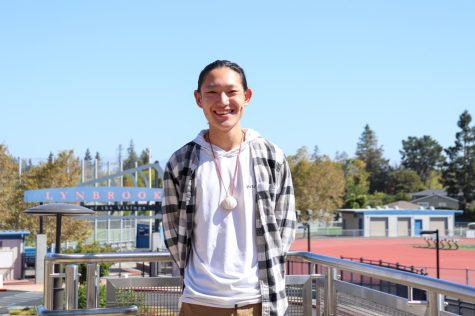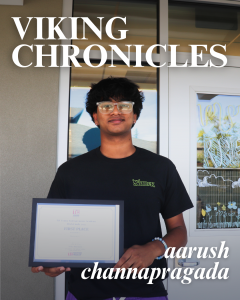One million steps across El Camino de Santiago
Jason, wearing his hiking gear that he used to backpack the El Camino de Santiago.
October 10, 2022
A stone’s throw away from the Atlantic Ocean and on the sharp crags of Cape Finisterre, Spain, stands a solitary boot cemented into the rough-hewn surface. It is relatively unnoticeable to most: its size is unremarkable and its inky bronze surface rebuffs the sun’s rays, shrouding it in a perpetual shadow. But to me, as I placed my own foot alongside the boot, it represented my final step in a 500-mile journey across the northern coast of Spain.
Two-and-a-half months earlier, I sat on the couch of my older brother’s college dorm and laid out my problem.
“I have no idea what to do for summer.”
Or rather, I did have ideas: a litany of resume-building activities before the looming deadline of college application. But none of these ideas framed itself within the pillars of my guiding principles. I sought something experiential rather than instructional, a self-made odyssey that dared me to explore my relationship with myself and with others.
He made a suggestion: “Why don’t you walk the Camino?”
El Camino de Santiago, or the Way of St. James, is entrenched in religious history as a prominent Catholic pilgrimage to Santiago de Compostela, Spain.
I had my reservations at first: my Spanish skills were lackluster; I wasn’t particularly pious; and walking up to nine hours each day wasn’t exactly the idea of experiential that I had in my mind. However, I gradually warmed up to the proposal. The global pandemic had put a pillory on travel, and I was itching to break free.
While I gained a newfound excitement, my mom was vocal about her misgivings. What would I do if I got injured or lost? How would I make reservations as an unaccompanied minor? Each question stacked one problem atop another like plates of dirty dishes, and every time I cleared one another would be added. What if some unanticipated problem came up and my parents would be too far away to help?
“Then I will figure it out by myself.”
It wasn’t a pacifying statement, but it was the truth. Because there surely would be times in my life when I would be unable to rely on help from my family, whether or not I was in Spain. I understood my parents’ incessant worries, but the best thing they could do for me was to let me go. They still had their concerns, but they did not let those concerns stop me from marking my own path.
I remember standing with my navy-brimmed cap and pale-gray sun shirt at the airport, mired by a long international travel form that I had not anticipated, hearing my mom’s panicked voice telling my brother on a phone call that we were still at the kiosk, and feeling her firm tug on my wrist once I finally finished filling out all the papers. I wrapped my arm around her shoulders, gave a gentle squeeze, and told her, “Everything will be alright.”
And it was. Even though I seriously injured a leg. Even though the day after I recuperated I got lost and walked twice the distance I had planned. Even though my mom’s fears did come true, I figured it all out for myself. Although there were setbacks, the hardships I faced were as integral to my journey as the pleasant memories I made.
When I flew back home, I did so with a small rock the shape of a boot tucked away in my backpack. While the bronze boot in Finisterre represented the end of my time in Spain, the boot I pocketed represented all that I had gained in 34 days: confidence and bravery, perseverance and strength. I carry the stone as a reminder that I am still walking my Camino today, perhaps not physically, but in my mind’s eye, I see the dusty path unfurl in front of me. It is a path where the only certainty is uncertainty, but that makes me all the more eager to forge ahead.





































































John Pearce • Jan 9, 2023 at 1:09 am
Fantastic. We lucky few.